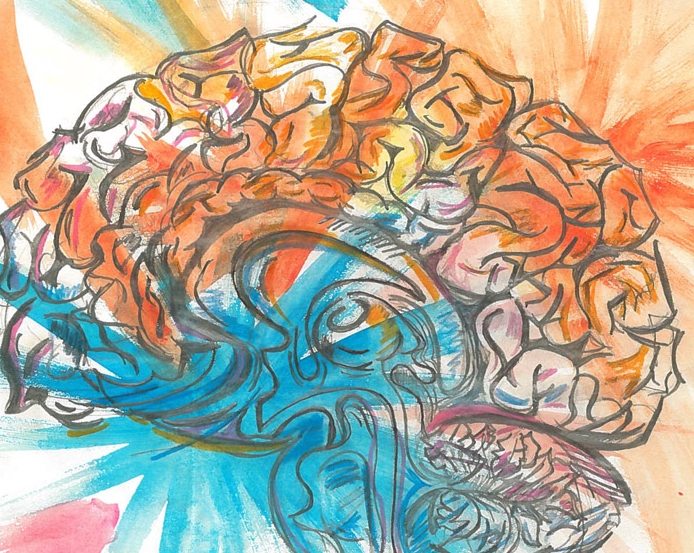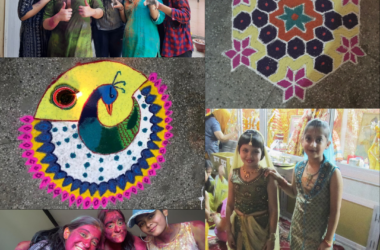Last October, my best friend, who has autism, told me that he thought I might be on the spectrum. I was skeptical: I’m not into trains, I take turns in a conversation, and I’m good at giving relationship advice; I’m not autistic. Still, his comment prompted me to do some research.
First, it’s important to dispel some myths about autism. Like other neurobehavioral conditions, autism exists on a spectrum, meaning symptoms vary dramatically in presentation and prevalence between individuals—Rain Man is the exception, not the rule. Autism is not a developmental disorder: Most people can learn techniques to alleviate their symptoms, but it isn’t something you grow out of, ever. People with autism are not psychopaths; they feel empathy, but have impaired emotional cognition, meaning that what comes across as a lack of caring is probably just a lack of understanding. Lastly, women with autism do exist, though they often go unnoticed by healthcare professionals because of the differences in the way that their symptoms manifest.
This unique presentation is the reason I was diagnosed so late. After an eating disorder, a misfired ADHD diagnosis, a period of selective mutism, two years of crippling social anxiety, and a long and frustrating experience with the mental health system, I was diagnosed with high-functioning autism at age 21. For reference, the average age for diagnosis in North America is four-and-a-half. I decided to seek out assessment after reading dozens of articles written by women presenting symptoms that matched my own experiences who didn’t receive their diagnoses until their twenties, thirties, or even later in life. Had I not gone to a psychologist and specifically requested testing for autism, I’m not certain I would have been diagnosed.
The way autism manifests in women looks nothing like stereotypical male autism. Men on the spectrum tend to have technical interests, such as trains or maps, however, women are more likely to fixate on socially-acceptable and traditionally-feminine interests like fashion or pop culture. Girls and boys learn to socialize differently from a young age, and, because there is so often more social pressure on women, girls are better at learning conversational rules such as appropriate eye contact. This means that autistic women, particularly high-functioning women, learn from a young age to ‘camouflage.’
Camouflaging is a constant and elaborate effort to mask autism symptoms in order to fit in in social situations. This can range from practicing conversation topics before social events to copying peers or TV characters for instructions on how to behave in social situations to repressing ‘stimming’—repetitive behaviours such as pacing, hand flapping, and leg tapping. Last month I had an interview for a job with my dream company: Before the interview, I wrote out and memorized answers to potential questions so that I wouldn’t lose track of what I was saying while I was focusing on not fidgeting and making appropriate amounts of eye contact. People on the spectrum do these things to connect with friends, avoid being shunned or disciplined, or simply to seem ‘normal.’ Constantly camouflaging is exhausting, and is linked to depression, identity loss, and disordered eating.
Women are four times less likely to be diagnosed with autism than men. While camouflaging contributes to this discrepancy, it also results from the measures used to assess autism, which were designed using predominantly-male studies. Autism in women is often misdiagnosed as borderline personality disorder or ADHD, or hidden behind depression and social anxiety. Without early identification and treatment, women with autism are also at increased risk for eating disorders and sexual abuse.
With updated diagnostic criteria, rates of diagnosis are increasing in North America. A 2017 study proposed a working definition for camouflaging, but a quantifiable way to score individuals on camouflaging for diagnostic purposes still does not exist. While funding for research that focuses on female and non-binary individuals is increasing, the field has a long way to go to ensure that autism is both identifiable and treatable in all genders, particularly in higher-functioning individuals.
A diagnosis doesn’t change anything about me. A diagnosis is a tool used by healthcare professionals to treat a condition; I’m not attached to this label, nor am I upset by it. Knowing that I am on the spectrum means that I can better understand how to take care of myself, and that I can begin to confront difficulties I have in social situations in a productive way.
I still freak out in grocery stores due to sensory overload, so I wear noise-cancelling headphones. I find large groups draining, so I take breaks in social situations. I suck at pop culture, but I don’t really feel a pressure to keep up anymore. Now, I understand that I just need to address my needs instead of fighting them.









